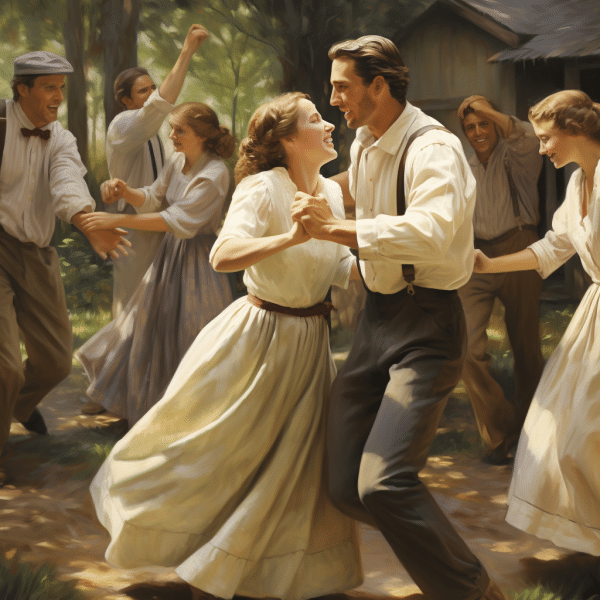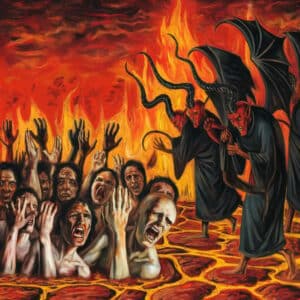

Many may see dancing as a joyful and creative expression, yet it is often regarded with hesitation within the Baptist community. To gain insight into this viewpoint, this article will uncover the religious and historical influences behind why Baptists commonly avoid dance. Analyze how notions of purity, connections to alcohol and gambling, and Biblical teaching all contribute to this practice. By exploring these aspects, one can better comprehend why such an aspect has prevailed in the Baptist faith. Join us on this journey to better understand the values and convictions that shape the Baptist tradition and the absence of dancing in their culture.
Understanding The Baptist Tradition
Rooted in Christianity, Baptists trace their moderated Protestant tradition to the 17th-century English Reformation. Believing in the authority of the Bible and the autonomy of the local church, this denomination emphasizes personal faith and baptizing by immersion. Worship services typically involve praying, singing hymns, summoning, and taking part in the Lord’s Supper. Baptist churches express varied theological beliefs, yet they commonly prioritize evangelism, missions, and social justice.
Related: HOW DID THE CROSS BECOME THE SYMBOL OF CHRISTIANITY
The Debate Around Dancing In Baptist Churches
For centuries, the question of whether to permit dancing in Baptist churches has been hotly debated. From a traditionalist perspective, it is seen as an indulgence of worldly desires, and thus, any Biblical references referencing dancing are interpreted with extreme rigidity. Conversely, many adherents accept its role as a form of expression and exaltation and see these verses more leniently.
Additionally, modern trends have given rise to further complexities in this discussion, as some churches have shifted their stance and begun to embrace dancing within their services. As such, this debate illuminates the interconnectedness between religious doctrine, cultural norms, and personal convictions.
The Historical Reasons Behind The Prohibition of Dancing in Baptist Churches
The foundation of the Baptist Church’s prohibition on dancing can be attributed to Puritan beliefs. Puritans viewed dancing as a morally reprehensible and worldly act, associating it with licentiousness and indulgence. Additionally, Baptist teachings prioritize holiness and abstention from carnal delights, resulting in an uncompromising stance against dancing as an entertainment source that can be conducive to excess and debauchery.
Influence of Puritanism on Baptist Views on Dancing
Strict moral codes and the rejection of worldly enjoyments formed the basis of Puritan thinking; thus, they deemed dancing as immoral and condemned it as a vice that would lead to temptation. It’s worth noting that opinions on the matter are subject to variation within the Baptist tradition.
Opposition To Worldly Pleasures And The Association of Dancing With Sin
Baptists distrust dancing as a pathway to sin and immorality. In recent years, more churches have included dancing in their worship or special events, reflecting shifting social ideals and an emphasis on inclusivity.
Examining Relevant Bible Verses on Dancing
Within the Baptist tradition, dancing has been a point of contention. Gain further insight into their stance on the matter by examining pertinent Biblical passages. None condemn dance or declare it forbidden; however, certain verses allude to it in varied contexts. These Scriptures, utilized to inform debate, include:
- Ecclesiastes 3:4: “A time to weep, and a time to laugh; a time to mourn, and a time to dance.” This verse acknowledges that there is a time for dancing, but it does not prescribe or prohibit it.
- Psalm 149:3: “Let them praise his name with dancing, making melody to him with tambourine and lyre.” This verse suggests that dancing can be a form of praise and worship to God.
- 1 Samuel 18:6: “When David returned from defeating the Philistine, the women came out of all the cities of Israel, singing and dancing, to meet King Saul, with tambourines, songs of joy, and musical instruments.” This verse depicts dancing as a joyful celebration.
Each church or individual may apply these verses to their own convictions.
Influence of Societal Changes on the Acceptance of Dancing in Baptist Churches
Some Baptist churches now allow dancing as worship. Gain further insight into their stance on the matter by examining pertinent Biblical passages. None condemn dance or declare it forbidden; however, certain verses allude to it in varied contexts.







